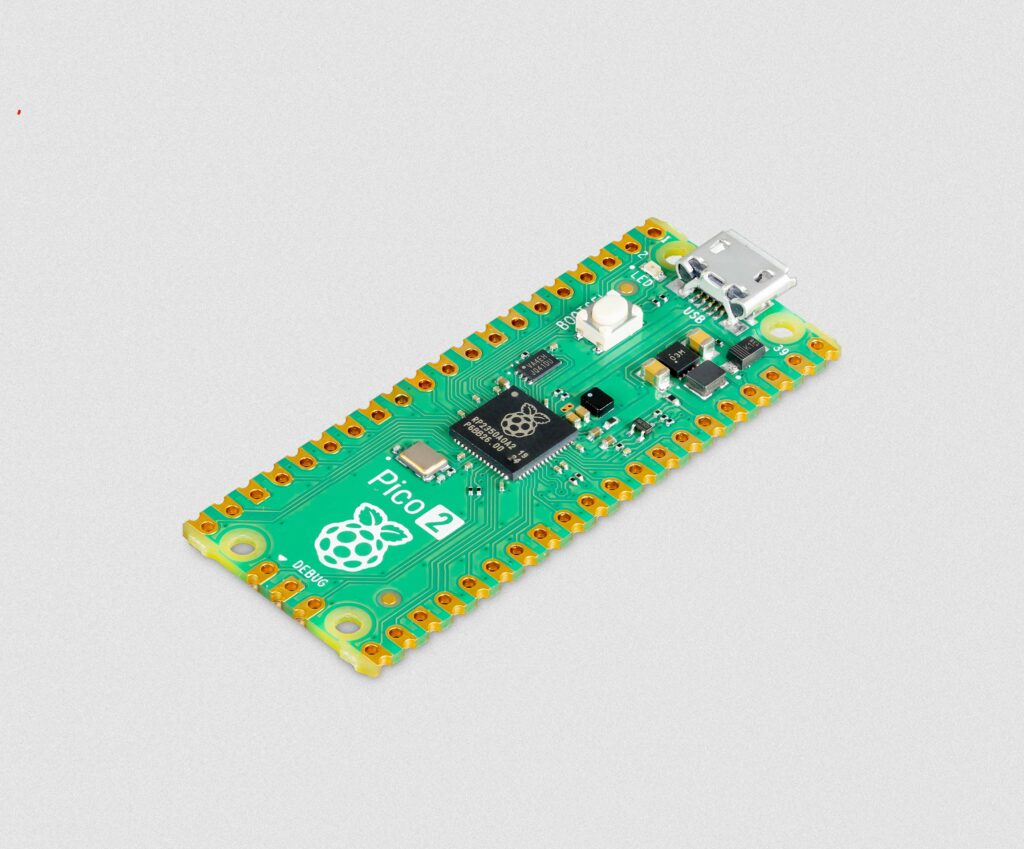The Raspberry Pi Pico 2, with its advanced features and flexible design, represents a significant step forward in microcontroller technology, offering users a powerful and versatile platform for a wide array of applications.

Raspberry Pi has launched its latest innovation, the Raspberry Pi Pico 2, powered by the newly developed RP2350 microcontroller. This new offering maintains the compact footprint of the original Pico but delivers significant performance enhancements, making it a standout option for both enthusiasts and design engineers. It is designed for a wide range of users, from hobbyists and educators to professional design engineers. Its combination of high performance, flexible digital interfaces, and robust security features makes it ideal for anyone looking to innovate in embedded systems, IoT, and custom hardware projects.
At the heart of the Raspberry Pi Pico 2 is the RP2350 microcontroller, which represents an upgrade over its predecessor, the RP2040. The microcontroller also introduces a comprehensive security model based on Arm TrustZone for Cortex-M, along with improved power efficiency.It pairs the RP2350 microcontroller with 4MB of on-board flash memory, doubling the storage capacity of the original Pico. Additional features include USB 1.1 with device and host support, low-power sleep and dormant modes, and drag-and-drop programming via mass storage over USB.
It features a:
- 150MHz system clock
- Dual Arm Cortex-M33 cores
- Dual Hazard3 RISC-V cores
- 520KB of SRAM
- 8KB of on-chip antifuse OTP storage.
For connectivity and interfacing, the Pico 2 offers 26 multifunction GPIO pins, including three that support ADC, and a suite of communication protocols such as SPI, I2C, and UART. The board also includes three programmable IO (PIO) blocks, 12 state machines, and a temperature sensor. Notably, the enhanced QSPI interface supports flash and PSRAM, burst transfers, odd clock divisors, and address translation, providing a versatile platform for custom peripheral support. The Pico 2 is available in two versions: a castellated module for direct soldering to carrier boards and a version with pre-soldered headers for easy integration into projects.
Eben Upton, CEO of Raspberry Pi, expressed enthusiasm for the launch: “We are excited to bring to market our second-generation microcontroller, RP2350, and the Raspberry Pi Pico 2 single-board computer. With higher performance, lower power consumption, and enhanced security, these products offer our community an unparalleled platform for experimentation and innovation. We can’t wait to see the incredible projects and products that will be created using these new tools.”







